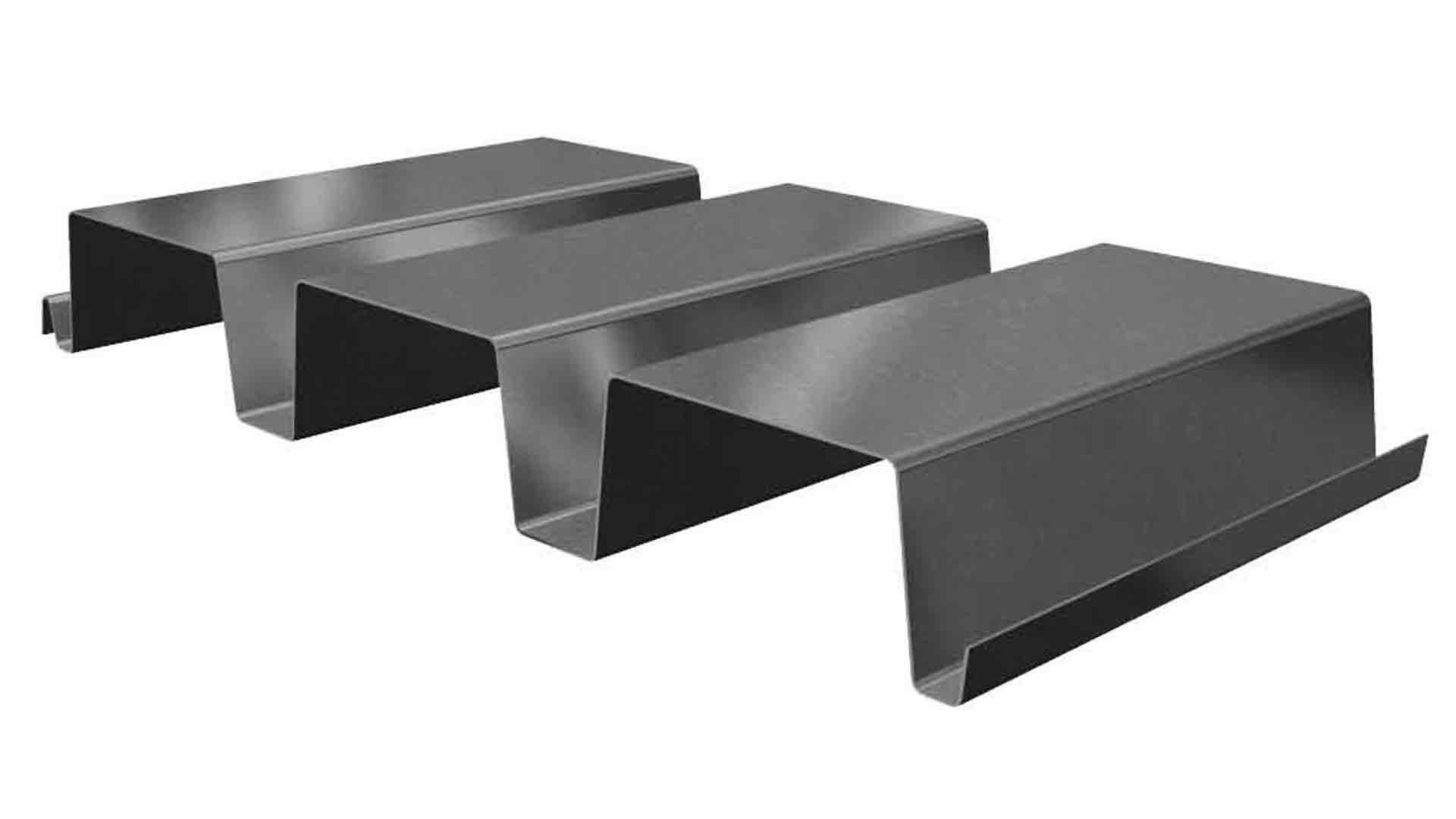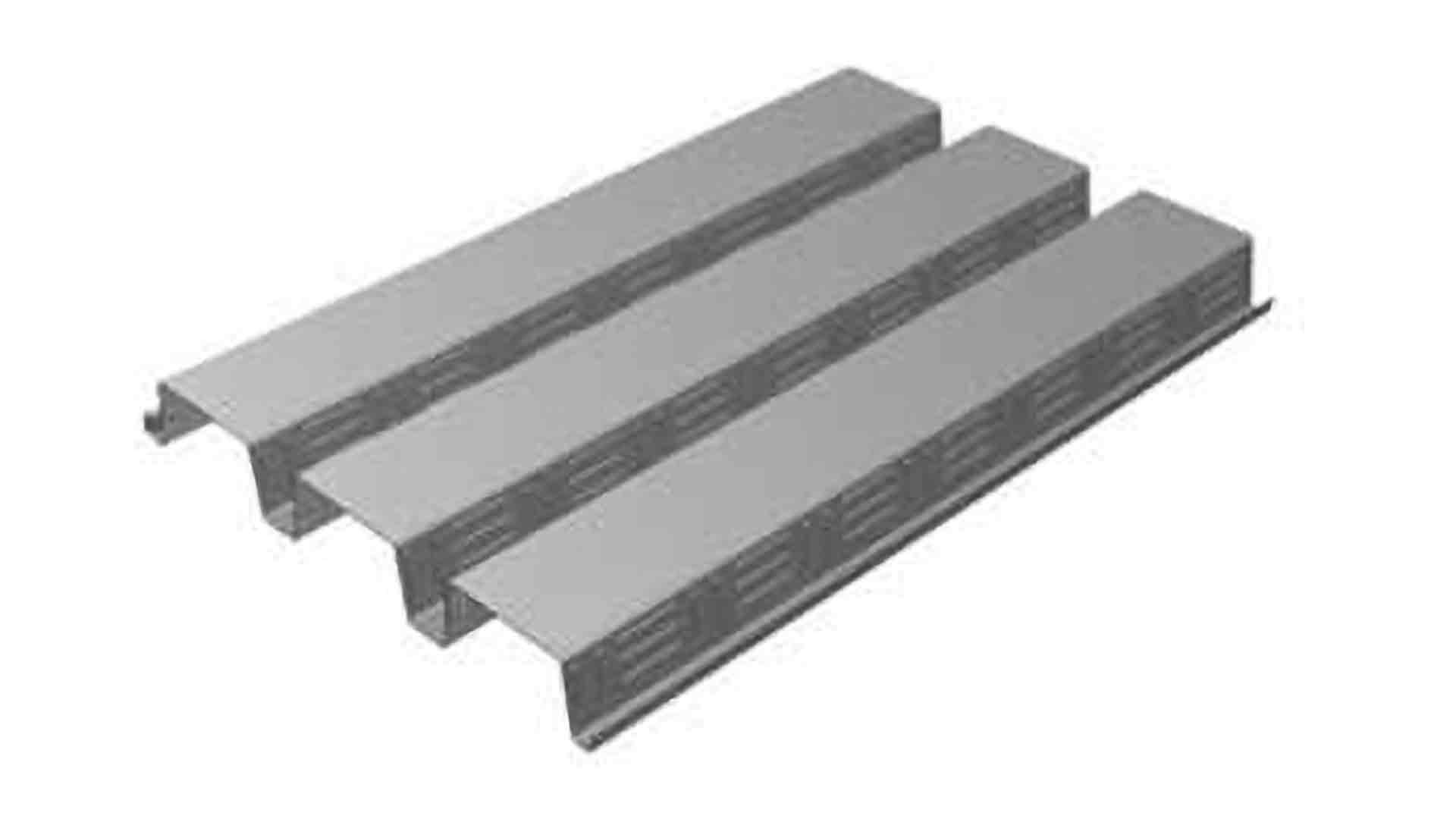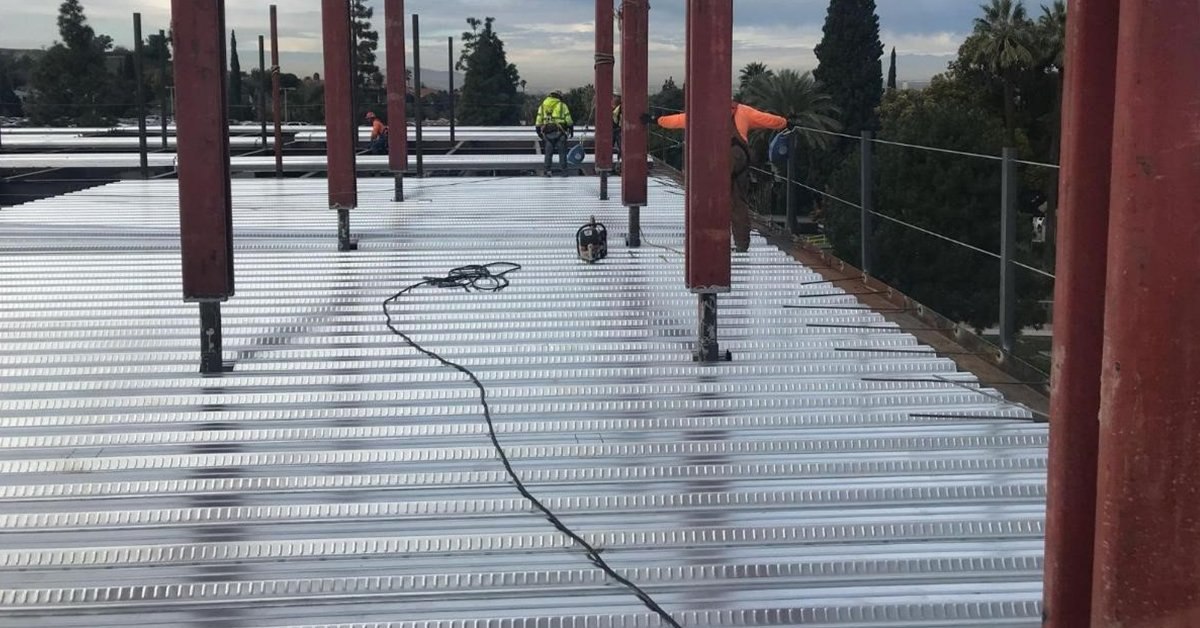How to Bid a Metal Decking Job to Make a Profit
At a basic level, it is very easy to bid a metal decking job. All a subcontractor has to do is decide on a price and submit a bid. However, this strategy will not usually result in making a profit. In fact, most of the time this strategy will result in LOSING MONEY.
Our sales team at Western Metal Deck consists of former metal deck estimators. They have experience in preparing estimates for hundreds of jobs to furnish and install metal decking. They know what items you need to factor into your bid, and items you may overlook, but shouldn’t. With their experience we have rounded up the top items you need to factor into your estimate.
You’ll learn what you need to do when you get a bid request. Then we will go over what items you need to factor into your estimate. This guide will teach you how to MAKE A PROFIT on a metal decking job.
What to do when you get a bid request
With most any construction project that involves metal deck, you will receive a request to submit a bid to furnish and install the metal decking. When you get this request, you will be sent a link to the job drawings and specifications. Make sure to follow the following steps, so that you have all the information necessary to begin your bid process.
- Read the job specifications regarding metal decking for the project. There is normally a table of contents to guide you to the proper section. It will most commonly be section 5300, but it could be a different section number. Metal deck job specifications can sometimes be combined into the structural steel section.
- Once you have found the specification, pay attention to what is noted that you need to include in your scope of work. If you find that there are certain items you do not want to include in your bid, you MUST EXCLUDE them on your written bid.
- Study the structural design drawings until you are thoroughly familiar with them. Also examine the architectural drawings for any additional items or areas that are in the metal decking scope of work, but are not shown on the structural drawings.
- Look at all the different levels and areas of floors and roofs. Measure the square footage of each of these areas. Note the metal deck type, gauge, and square footage for each area. Don’t assume it is all the same stuff. Most jobs will have more than one type and gauge of metal decking on it. The main reason you’ll want to do this is the thicker the decking the more it will cost. You don’t want to overlook a factor like this and then be on the hook for an unplanned cost.
- Examine the structural design drawings for any accessories that the job specifications require to be supplied in the metal decking scope of work.
Some common accessory items include, but are limited to:
- Edge Form
- Cell Closure
- Shear Connector Studs
- Deformed Bars
At this point of your estimate you are ready to begin pricing the job.
What Items to Factor into your Estimate
Preparing an estimate to furnish and install metal decking involves more than the cost of materials and labor. There are other items you will need to factor in if you want to make sure you make a profit.
We will go over the main items you need to factor into your estimate:
- Material
- Rental Equipment
- Fuel
- Sales Tax
- Delivery
- Shop Drawings
- Labor
- Subsistence Allowance
- Overhead
- Misc. Items & Labor
- Profit
Material
You will need to calculate the total cost of materials, this not only includes metal decking but the cost of accessories as well.
Metal Decking
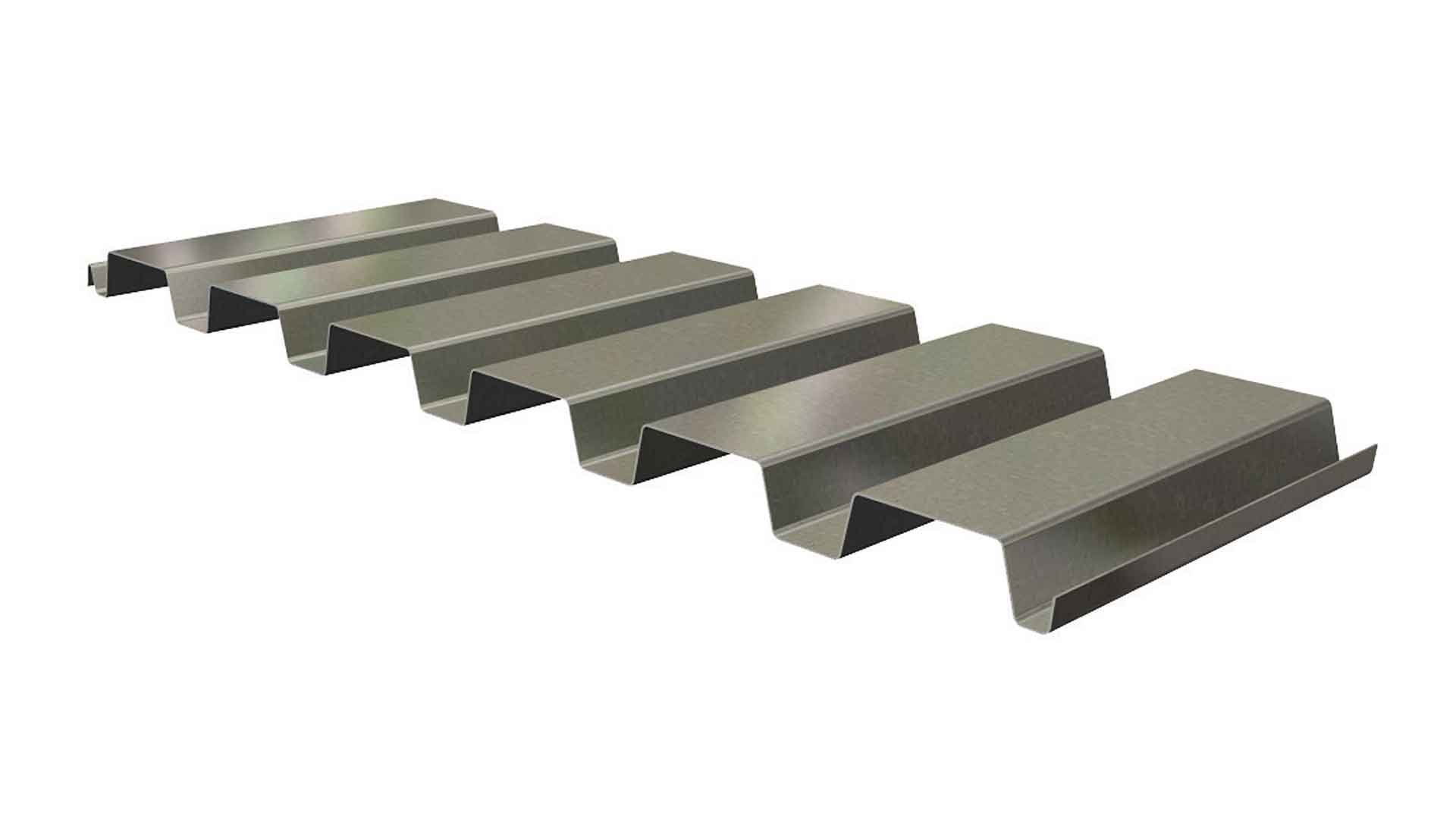
To calculate the cost of the metal decking, you will need to calculate the total square feet for each type and gauge of metal decking. You will then need to get pricing for each type and gauge.
For each type & gauge, multiply the square foot quantity by the square foot unit price. Remember to pay attention to the gauge. Even if two items are the same type, if they are different gauges, the cost difference can be huge.
For instance you may have:
Item #1) 30,000 square feet of 16 GA Type W3-36 FormLok Galv. G-60
Item #2) 30,000 square feet of 20 GA Type W3-36 FormLok Galv. G-60
You would need to get the pricing for items 1 & 2.
Item#1) $4.00 per square foot
Item#2) $2.75 per square foot
Once you have the unit price for each item you can multiply the total square feet by unit price to get cost.
Item #1) 30,000 X $4.00 =$120,000.00
Item#2) 30,000 X $2.75 = $82,500.00
Items # 1 & 2 were both the same type and quantity, but different gauges (thicknesses). The difference in price came out to over $37K, which is why you need to pay attention to the type and gauge.
Accessories
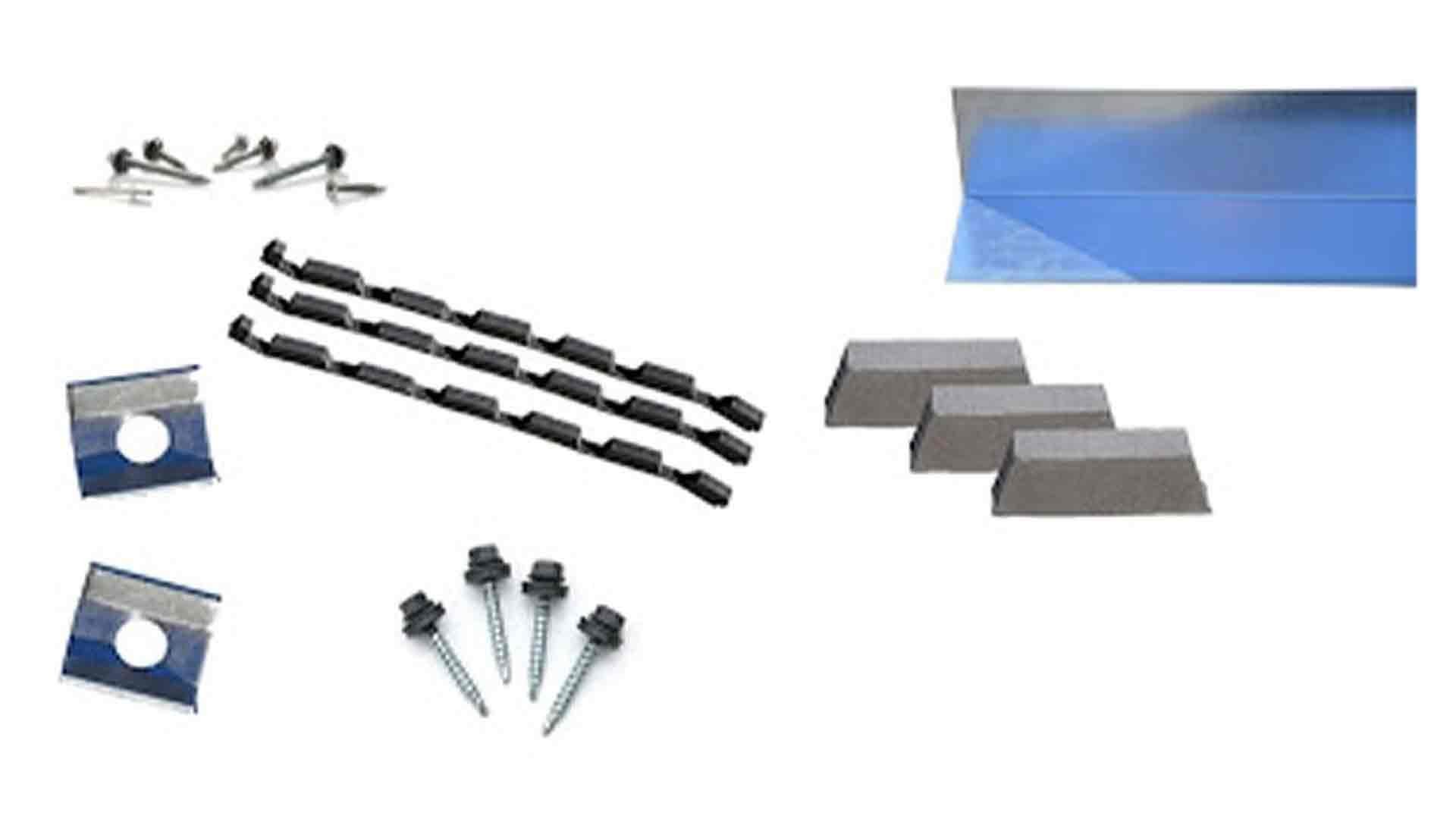
Calculate the types, thicknesses, and quantities for each accessory. You will then need to get pricing for all the accessories.
Once you have all the accessories and unit prices you will need to get the totals. Multiply the quantities by the unit price for each accessory item, add them all up and this will be your total cost for accessories.
Rental Equipment
The next thing a sub-contractor must consider is the cost of the rental equipment. It is common to need items such as: stud welder, welding machines, saws, button punches, cranes and work rigging trucks. If your company doesn’t already own these items, then they will most likely need to rent this equipment. A bigger job will require longer rentals, which in turn will cost more.
Fuel
The cost of fuel should not be overlooked. You will need fuel for company work trucks, welding machines, saws, and stud welders. On a small job the amount won’t be too large, but on a larger job it can be significant.
Sales Tax
Sales tax for the material will need to be added to your estimate. You will need to figure out what sales tax rate to apply. In California the sales tax rates are based upon which city the material is shipped to or picked up from. The rates can vary by a few percentage points, so be sure to look up the city's sales tax rate. Once you have the rate, multiply the cost of materials by the sales tax rate to get your total sales tax.
Delivery
 To calculate the cost of delivery, you will need to figure out the total weight of the material and the distance it has to be shipped. The heavier the total weight, and further it ships, the more it will cost. You can get a general delivery rate from trucking companies based on total weight and distance.
To calculate the cost of delivery, you will need to figure out the total weight of the material and the distance it has to be shipped. The heavier the total weight, and further it ships, the more it will cost. You can get a general delivery rate from trucking companies based on total weight and distance.
Shop Drawings
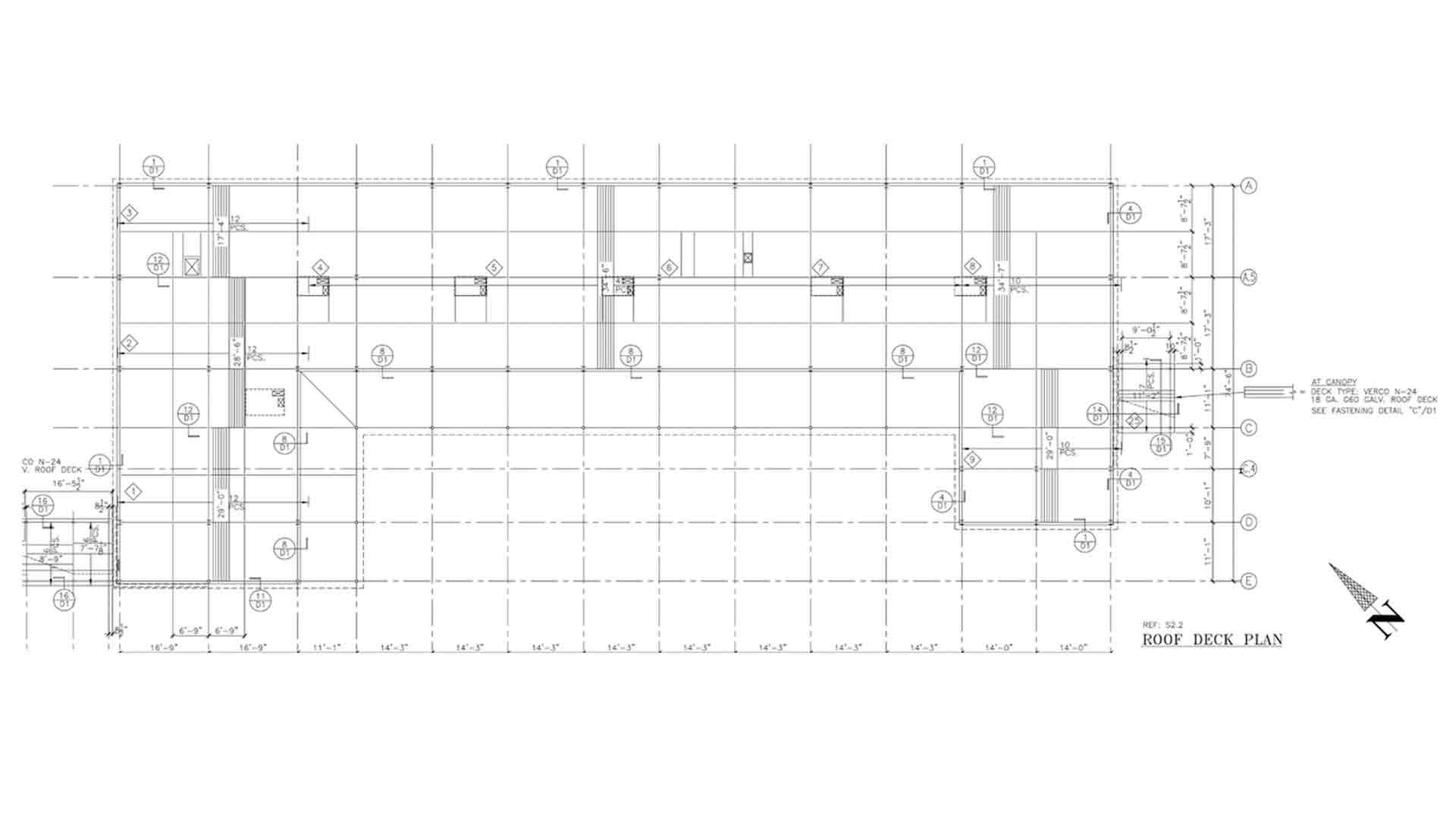
Almost all jobs require shop drawings for the metal decking. The shop drawings are very often subcontracted out to a drafting company, therefore you must put a budget in your estimate to cover this cost. If possible, get a bid from a drafting company prior to bidding the job in order to be more accurate on this item.
Labor
A good method for estimating metal decking labor costs is to calculate the number of hours it takes for each labor operation and multiply it by your hourly rate. Below are the different labor operations you need to add up.
Hoisting Deck Bundles
In some areas of the country the crew that is erecting the structural steel will hoist and land the metal decking bundles. If this isn’t the case, then the metal decking company will hoist and land the bundles on the steel framing. Stipulate in your bid if you need to include this item.
If included, figure out what size crane you will need, how long you will need it for, and the hourly rate. Add the hourly cost of the crane and the appropriate man hours at your hourly rate to do the job.
Shakeout
Shakeout consists of spreading each piece of metal decking from its bundle to its final position on the building's steel skeleton. This operation is done one sheet at a time. In an 8 hour day, this operation could take 2-3 men to spread and temporarily fasten 2,000 to 3,000 square feet on a floor or 3,000 to 5,000 square feet on a roof. Once you decide on your estimated shakeout production rate you can figure out how many man hours it will take and multiply it by your company’s hourly rate.
Permanently Fastening Metal Decking to the Steel Frame
Each sheet of metal deck will need to be permanently fastened to the steel frame. This operation will be done by either puddle welding or by using a pneumatically shot pin. Either way you will need to estimate the man hours to do this multiplied by your hourly rate.
Installing Edge Form and Cell Closure
Most jobs include some edge form and or cell closure. You will need to estimate how many hours it will take to install this item and multiply the hours by your hourly rate.
Shooting Shear Connector Studs
Not all metal decking jobs have shear connector studs. If your job has studs you may have the option of sub-contracting this item to another company or doing the work with your company. If you are going to subcontract the work, try to get a bid from your subcontractor ahead of time. If your company is going to install the shear connector studs, you will need to figure in your labor cost. A two man team should be able to install approximately 2,000 to 3,000 shear connector studs per 8-hour day. Add the total man hours and multiply by the company’s hourly rate.
Subsistence Allowance
Some jobs are located too far away from the company location to allow the field iron workers to commute back and forth daily. When this is the case a subsistence allowance will have to be paid to each worker to cover the cost of lodging and food. To determine the dollar amount take the estimated field hours and divide by 8. This will give you the number of days. Next multiply the number of days by the company’s daily subsistence rate.
Overhead
Most companies have many other costs of doing business that are not directly related to material and labor. Every job that a sub-contractor completes must contribute to the company's overhead costs.
Some of the main overhead costs are:
- Monthly rent or mortgage payments
- Truck and car and equipment depreciation
- Truck and car and equipment maintenance
- Office and management salaries
- Workman’s comp, health insurance and payroll taxes for office and management employees.
- Supplies and misc. expenses
Some companies use a total cost percentage markup in the range of 15-20% of the labor and material cost to cover overhead.
Miscellaneous Items and Labor
Beware there are always odd ball miscellaneous items on jobs. Make sure you do not overlook them and put money in your estimate for both material and labor.
Profit
Most times, profit is based upon a percentage markup of labor and material totals. This markup could range between 20% and 35% depending on the size of the job and its complexity.
Retention
Remember that when deciding on the cost percentage markup to charge for profit is that in the construction industry it is standard to withhold 10% payment of the contract for retention. Quite often retention payment for metal decking will be withheld for a year or longer. Retention is normally not paid until the project is complete. As a result, if the profit markup on the job is too low a company may not break even until the company gets their retention payment.
Ready to Prepare your Bid?
When you follow the steps we have laid out and are careful not to make any mistakes in your quantities or calculations you should be able to submit a bid to furnish and install metal decking.
The material cost should be the same for simple jobs and complex jobs. However beware on complex jobs, labor costs may increase per square foot because of the complexities involved. Don’t get caught bidding a large complicated job too cheap.
While we at Western Metal Deck are not subcontractors and cannot install the metal decking for you, we can give you a price to supply the metal decking. If needed, we can even give you a quote to do the shop drawings, supply the metal deck, and certain accessories.
Learn more about our Shop Drawings & Metal Deck Packages.

